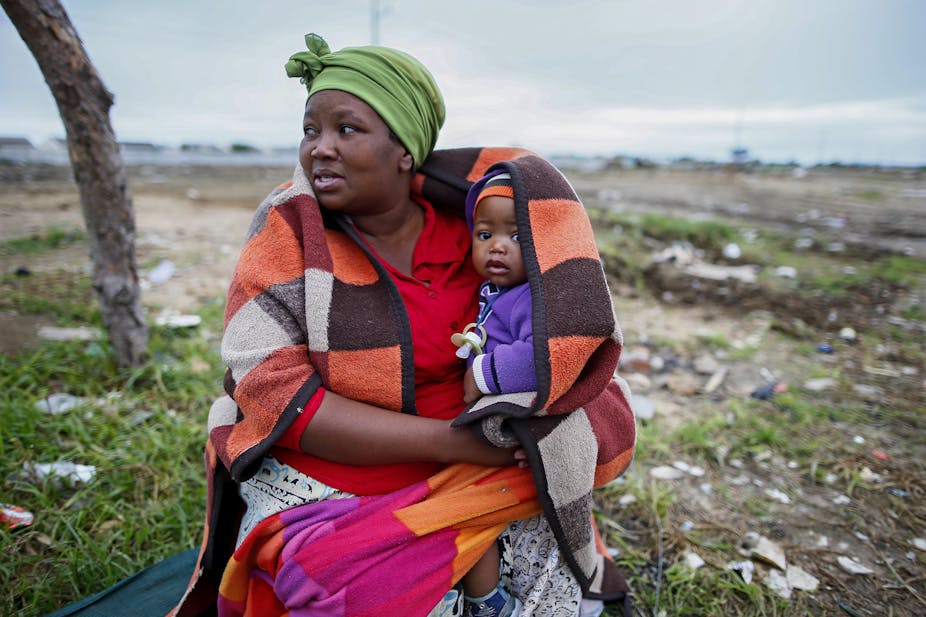The South African government recently reported that around 6.5 million job opportunities have been created through its Expanded Public Works Programme (EPWP) since 2004. This should be good news given the high levels of unemployment in South Africa, especially for women, who are disadvantaged in the job market and are specifically targeted by the programme.
But these claims of excellent outcomes should be tempered given some worrying problems with the programme. These need to be urgently addressed to avoid the unintended exploitation of women desperate to survive.
The dual need for job creation and investment in public services (such as road maintenance) is what drives public works programmes worldwide. While in South Africa the system of social grants is the largest and most successful social protection programme, the EPWP is designed to respond to the needs of working age adults. Most aren’t eligible for social grants unless they have a disability that prevents them from working.
The public works programme is a social protection mechanism which creates paid work opportunities for large numbers of unemployed people, primarily women and youth. It provides them with both skills and work experience. This is to help them find work or start their own enterprises after they’ve exited the programme.
What’s working well
The programme is split into four very different sectors. To uncover the specific outcomes for women, it’s useful to focus on the social sector. This was born from an innovative idea that the lack of services in the early childhood development and home based care sectors (among others) could possibly be met by a public works programme.
A second positive feature is the inclusion of care work. This offers recognition of care, usually of children, sick people, and the elderly, as an important public good, that contributes to the well-being of society. These tasks, largely performed by women, often remain invisible and under-valued, even though they are critical to a healthy and productive society.
Thirdly, the social sector has trained more public works programme beneficiaries than the other three sectors which ultimately contributes to the gaining of legitimate qualifications. Participants are positive about the skills they’ve gained and the dignity and personal accomplishment this provides.
Finally, the cash stipends contribute to household incomes.
What isn’t working
Some critical flaws suggest that the programme is creating pockets of disadvantage and exploitation. An inherent problem is that an evaluation of the outcomes is severely hampered by weak monitoring and data management systems.
Claims of numbers of job opportunities created, the number of participants trained and, the details and locations of the delivery of services are based on questionable information. This is because data is inconsistently recorded.
A second challenge is the issue of labour “displacement”. Displacement is a problem where a public works programme doesn’t actually create new jobs. Instead, the number of jobs in the sector remains broadly constant, but work is taken away from non-beneficiaries and given to beneficiaries.
Or NGOs run out of funding often due to failures on the part of the Department of Social Development. So workers (often women) previously paid a proper salary, are migrated to position funded by the public works programme where they are paid a small stipend to do exactly the same work.
Thirdly, the stipend amounts are very low. A ministerial dispensation sets minimum public works programme wages. But social sector participants are paid less than those in the infrastructure and environmental sectors. This means that work done largely by women is valued less than the work done in the infrastructure and environmental sectors, where more men are involved.
While these amounts do contribute to daily survival costs, they don’t allow women to build up assets or capital after exiting the programme. And low stipends undermine the valuing of care.
Institutional failures are a fourth area of concern, and create serious consequences for participants. Payments from the Department of Social Development to NGOs or early learning and development centres are often late, creating enormous financial stress for the participants who can go months without a stipend.
Precisely because the participants are largely female, the major implementation problems disproportionately affect women and their families. The knock-on effect on service delivery is negative as late stipend payment demotivates participants, and encourages work absences.
Finally, a fundamental flaw in the design of the programme is the lack of job opportunities in the sector after exiting. In theory the skills development and work experience gained increases chances of getting work. But in practice the work areas of all the sectors have an oversupply of similarly trained workers.
This problem is particularly acute in the social sector, which is also an underfunded field with few vacancies. So finding a job after exiting is unlikely. Even where employment is found, the insecure working conditions and low wages almost guarantee that those working join the ranks of the working poor.
A good idea that needs fine-tuning
These problems are substantial. What’s emerging is a group of desperate women experiencing precarious, insecure, and sometimes exploitative conditions to earn a small stipend for a limited time just to survive.
The programme is a commendably progressive commitment by the state. But it cannot be to the detriment of vulnerable individual workers, especially women, who have to tolerate insecurity, changing income, low income, and variable training.
In the context of 36% unemployment – based on the broader definition of joblessness – and the urgent need for services, it’s critical that innovative programmes are closely monitored to ensure positive effects. The state needs to be held to account to avoid a situation in which well-intended solutions create additional pockets of disadvantage and exploitation.

